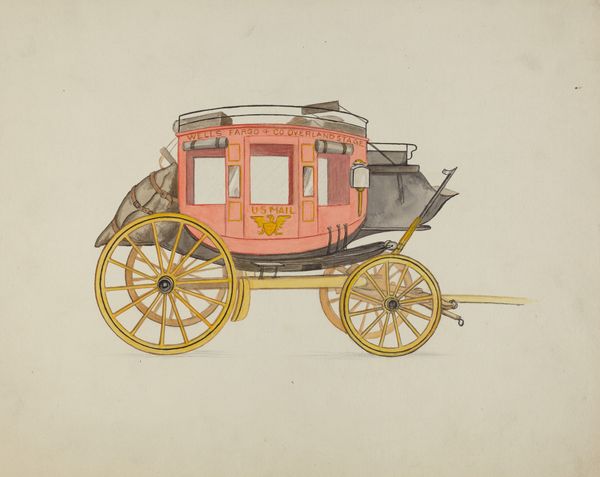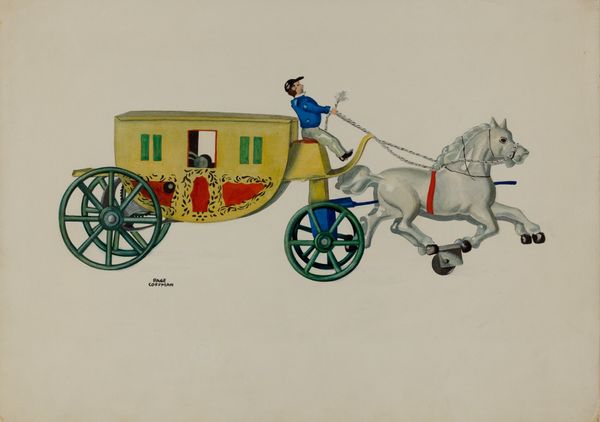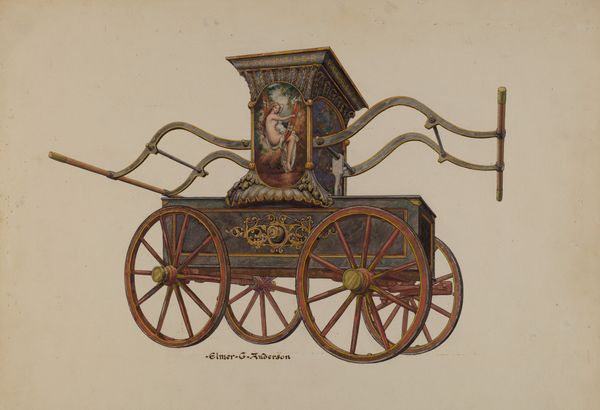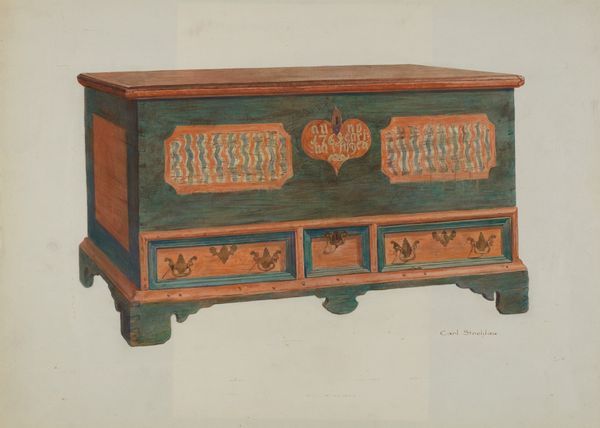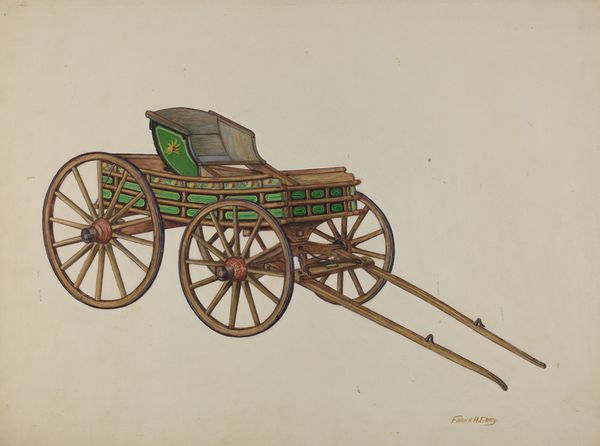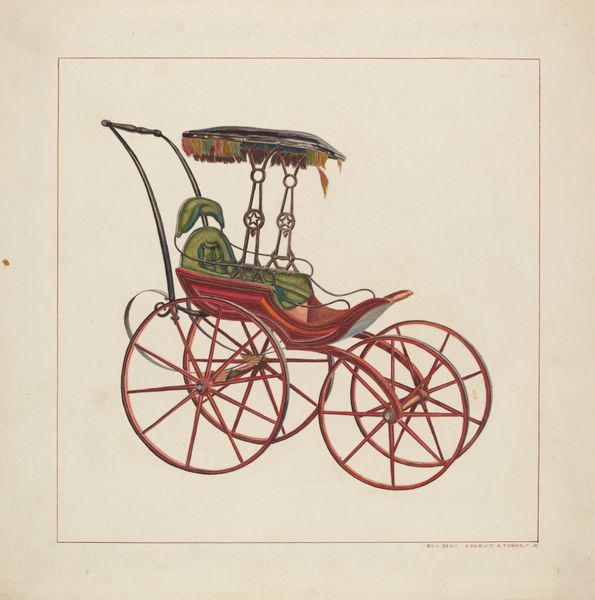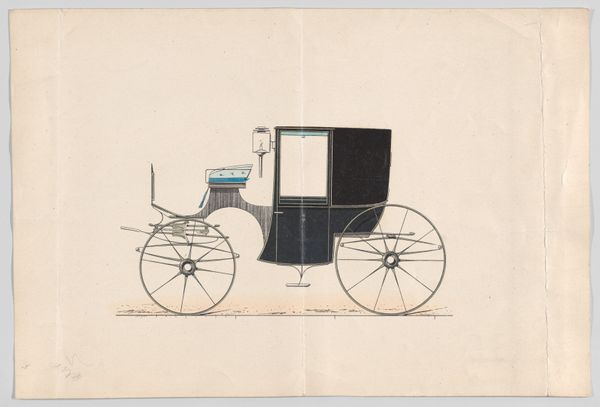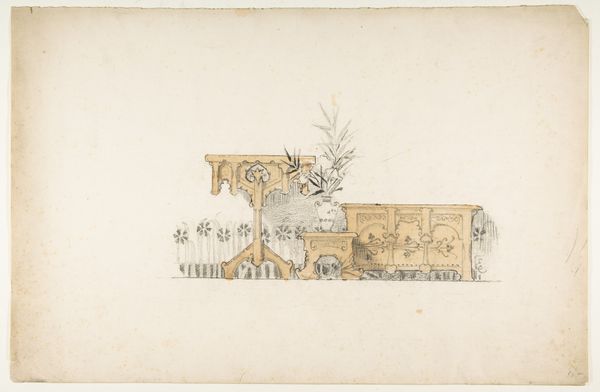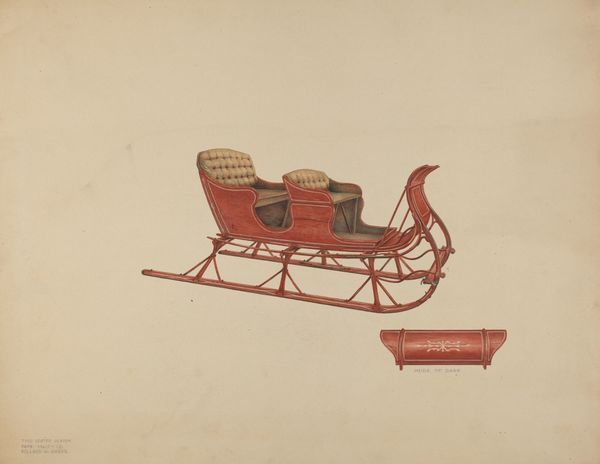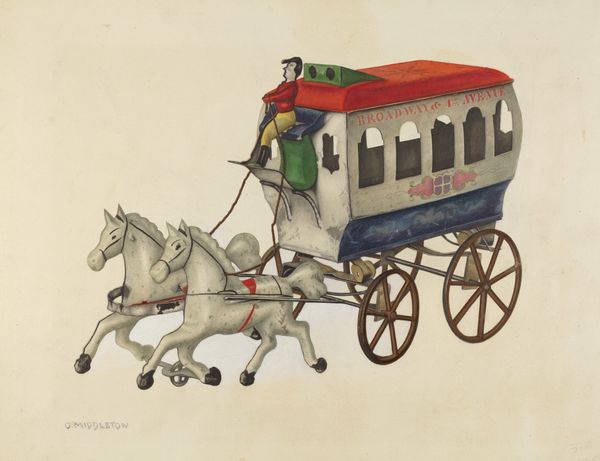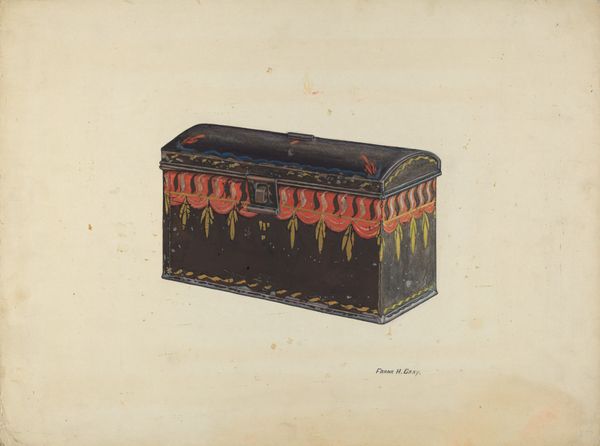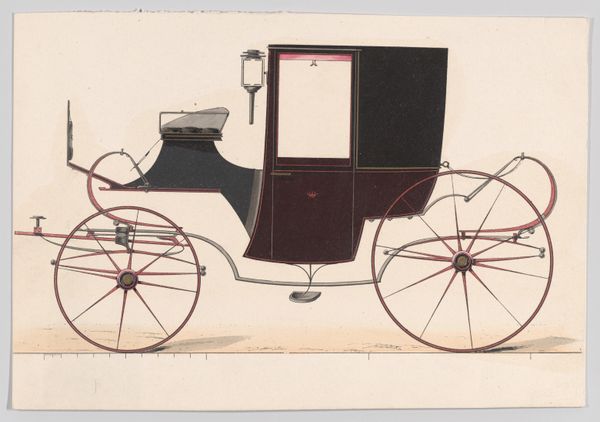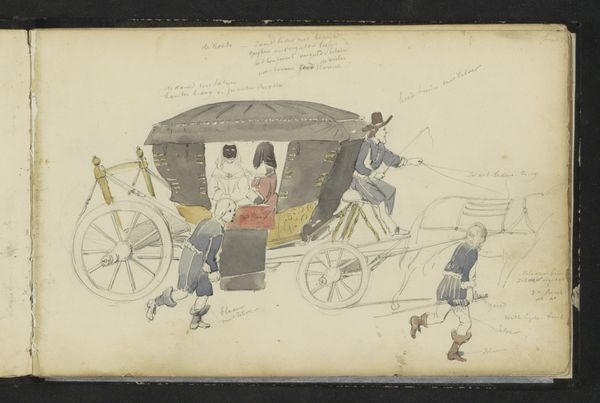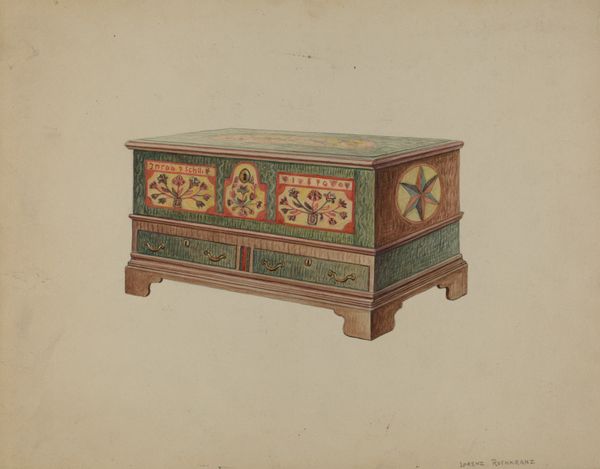
drawing, coloured-pencil, watercolor
#
drawing
#
coloured-pencil
#
watercolor
#
coloured pencil
#
watercolour illustration
#
genre-painting
#
modernism
#
watercolor
#
realism
Dimensions: overall: 27.9 x 45.1 cm (11 x 17 3/4 in.) Original IAD Object: 10 1/2" long; 3 1/2" high; 2 1/2" wide
Copyright: National Gallery of Art: CC0 1.0
Editor: So, this is Dorothy Brennan’s "Toy Coach," made around 1939, using watercolor and colored pencil. It depicts what appears to be a toy train car. I’m really struck by the detail, especially the faces in the windows. What catches your eye in this piece? Curator: The "Black Diamond" emblazoned on the side is quite suggestive. The diamond, often associated with value, resilience, and clarity, combined with the darkness of 'black', brings to my mind themes of hidden worth, or perhaps potential that needs to be uncovered. What sort of cultural memory is attached to "black diamonds?" Editor: That’s interesting, I hadn’t thought about it like that. Is there some significance in depicting figures looking out the windows? Curator: Precisely! They act as witnesses, don't they? Consider the curtains in each window: what significance do those images of concealment and revealing conjure up, symbolically and culturally? Perhaps hinting at selective vision or storytelling through controlled glimpses. In addition, toy coaches were often symbolic objects during periods of transition, promising both stability and journeys to unseen lands. Does the artwork trigger some association? Editor: I suppose the people do give a sense of voyeurism. So, is it possible Brennan is saying something about observation and travel in uncertain times? It kind of feels unsettling to look at them all staring out. Curator: Exactly. It invites us to reflect on what journeys, literal or metaphorical, were available in the late 1930s. Perhaps this speaks to how our perspectives and narratives are formed—what we see and choose not to see, hidden and exposed. And of course the context of this being a ‘toy’ introduces questions of innocence and the gaze that is involved in looking without understanding the full picture. Editor: I see. The symbols open it up to broader themes of history and perception. Thanks, I appreciate that expanded perspective! Curator: Absolutely! These artworks are invitations to examine culture as memory, passed down with colors, images and their meanings, interpreted from unique vantage points.
Comments
No comments
Be the first to comment and join the conversation on the ultimate creative platform.
